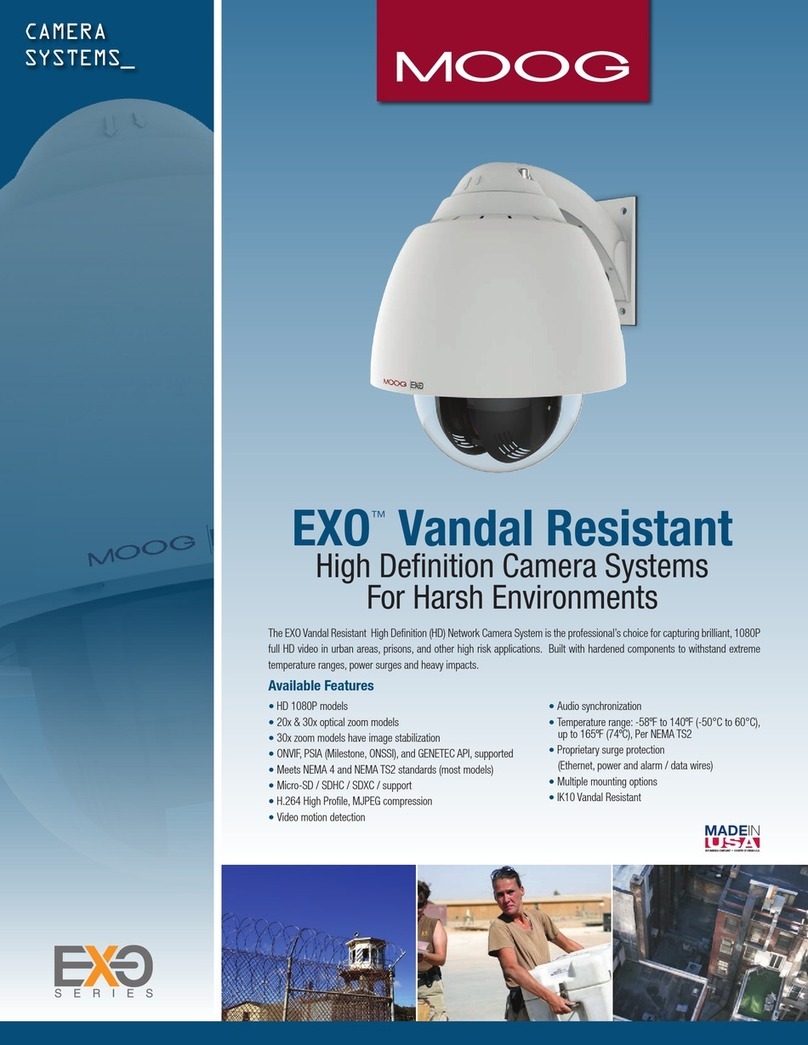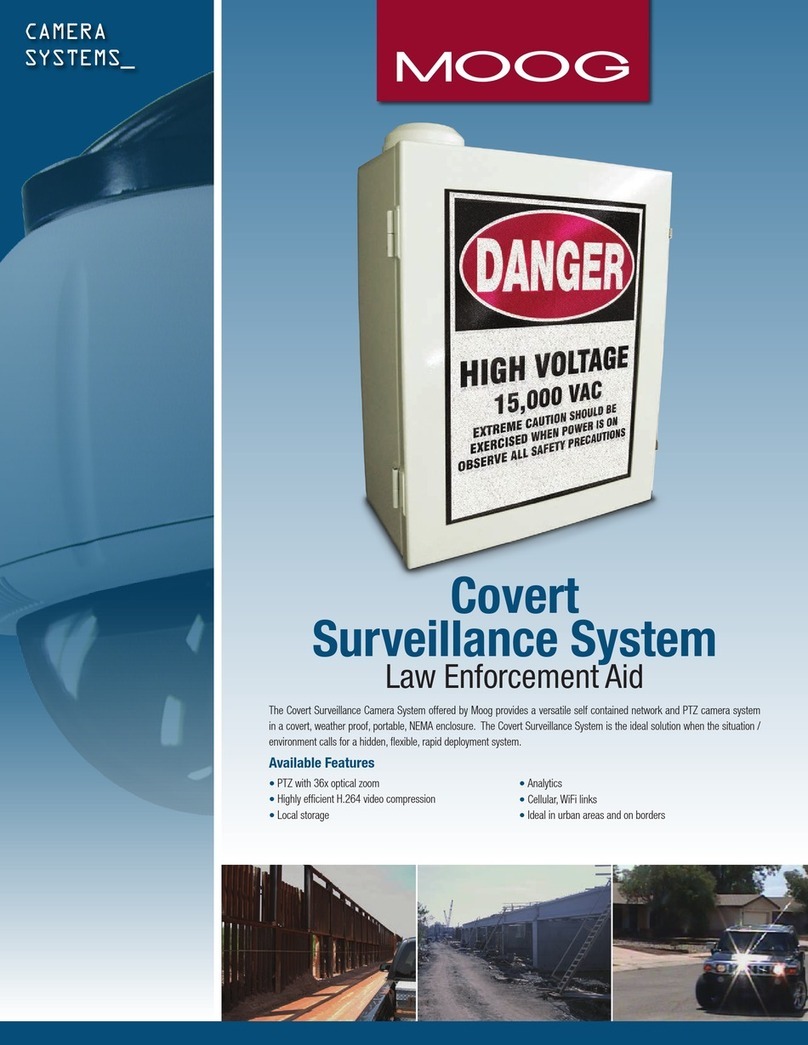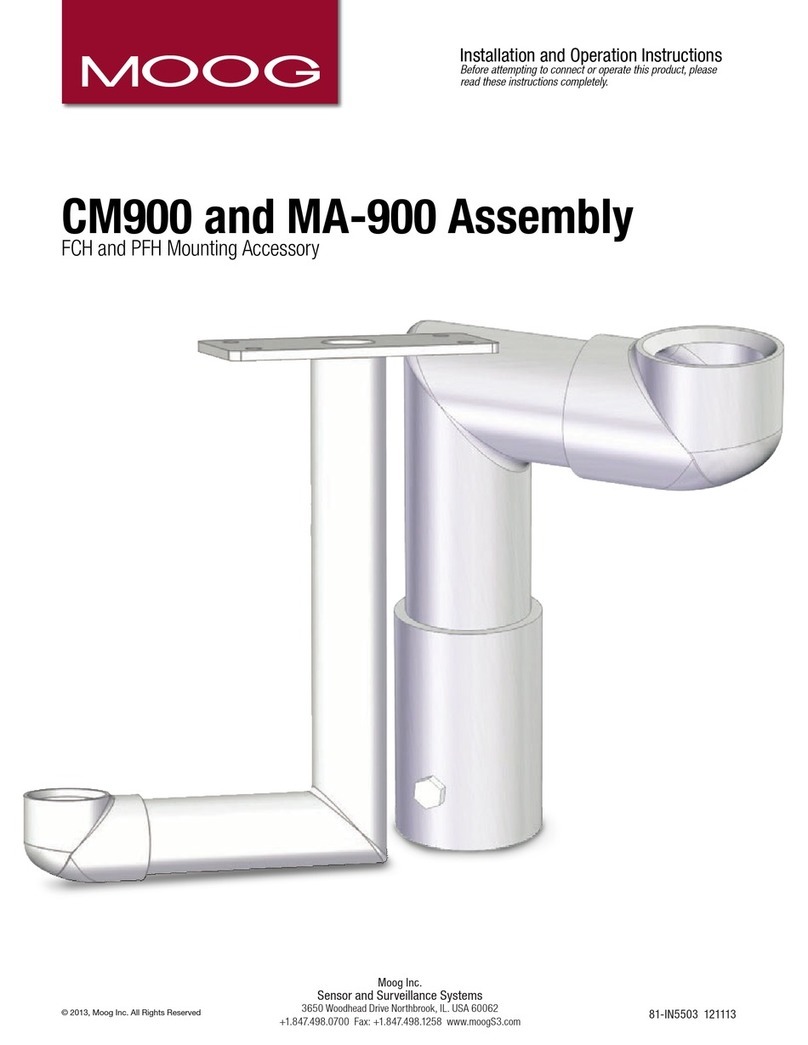
____________________________________________________________________
____________________________________________________________________________
MN0090-05 Page 2 of 68 18008
MPT-90 PRODUCT MANUAL
WARNING
IT IS REQUIRED THAT YOU READ AND FOLLOW ALL INSTRUCTIONS IN THIS MANUAL
BY NOT FOLLOWING THE INSTRUCTIONS IN THIS MANUAL MAY RESULT IN DAMAGE
TO THE EQUIPMENT OR OPERATOR
MOOG
Phone: (847) 498-0700
Email: moogs3service@moog.com
LIMITED WARRANTY
Products manufactured by SELLER are warranted at time of shipment to be free from defects in material and workmanship
under normal use and service. This warranty is only applicable to any of SELLER’s products which BUYER returns to
SELLER within one (1) year from the date of initial delivery, and which SELLER determines to be defective within the terms
of this warranty.
Commercial Off-The-Shelf (OTS) products delivered by SELLER are warranted at time of shipment to be free from defects in
material and workmanship under normal use and service. This warranty is only applicable to any of OTS Products delivered
by SELLER which BUYER returns to SELLER within ninety (90) days from the date of initial delivery, and which SELLER
determines to be defective within the terms of this warranty. SELLER's obligations, with respect to such applicable warranty
returns, are limited to repair, replacement, or refund of the purchase price actually paid for the product, at SELLER's sole
option.
SELLER shall bear round-trip shipment costs of defective Items found to be covered by this warranty. Unless otherwise
agreed, the BUYER shall bear any additional costs which SELLER incurs for repair, dismantling, installation, and transport
as a result of the Product being located in a place other than the destination stated in the Contract or, if no destination is
stated, the place of delivery.
Replaced or repaired parts or Products will carry only the unexpired portion of the original warranty as of the date of notice to
SELLER of the warranty defect. Defective Products or parts thereof may be replaced with either new, factory refurbished, or
remanufactured parts. Defective parts, which have been replaced, shall become the SELLER’s property. This warranty does
not extend to any product sold by SELLER which has been subjected to misuse, neglect, accident, improper installation, or a
use for purposes not included or not in accordance with operational maintenance procedures and instructions furnished by
SELLER, or which has been repaired or altered by BUYER or persons other than SELLER or which has been damaged by
secondary causes, including but not limited to, improper voltages, adverse environment conditions, improper signals, or
products which have had their serial number or any part thereof altered, defaced, or removed . Fuses, air filters, desiccants,
and lamps shall be excluded from the provisions of this warranty, and as to these Items no warranty, expressed or implied, is
made by SELLER. SELLER liability does not cover normal wear and tear or deterioration.
THE FOREGOING, WARRANTY IS IN LIEU OF ALL OTHER WARRANTIES, INCLUDING, BUT NOT LIMITED TO,
WRITTEN, EXPRESS, IMPLIED OR STATUTORY WARRANTIES.
IMPLIED WARRANTIES OF FITNESS FOR A PARTICULAR PURPOSE AND MERCHANTABILITY AND DESIGN
WARRANTIES ARE SPECIFICALLY EXCLUDED AND SHALL NOT APPLY.
SELLER'S OBLIGATIONS AND BUYER'S REMEDIES WITH RESPECT TO DEFECTIVE OR NONCONFORMING
PRODUCTS ARE SOLELY AND EXCLUSIVELY AS STATED HEREIN.
At the time of purchase, the SELLER grants to the BUYER, the option to procure a one or two years warranty extension for
selected custom products at the prices specified in the SELLER’s proposal/contract.






























